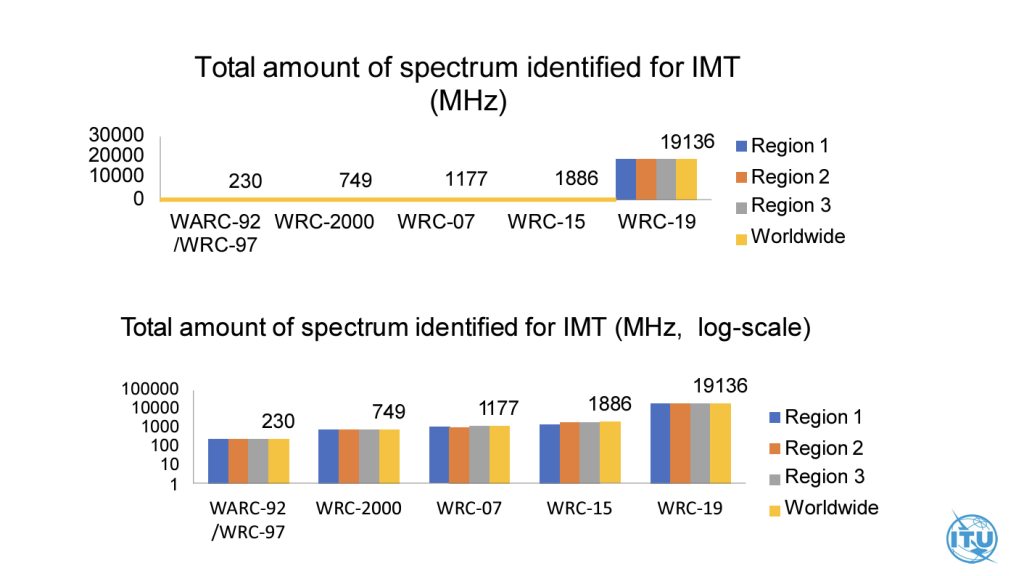The key engineering, legal and policy issues
IMT
International Mobile Telecommunications (IMT) is the term used by the ITUThe International Telecommunication U... to describe mobile broadband systems. IMT-2000 is commonly associated with 3G technology, IMT-2020 with 5G, and IMT-2030 with 6G.
Deciding which spectrum bands receive an “IMT identification” happens at the World Radio Communications ConferenceThe World Radiocommunication Conference (W... (WRC). When a band receives an identification, a footnote is added to the band in the ITU Radio Regulations which says the band is now an IMT band. An identification does not stop countries from using the band for something else, but it does make it more likely that the band will be used for mobile broadband.

Mobile industry bodies will often propose a list of bands that they think should be considered for identification. This is done ahead of the WRC, which takes place every four years. Other spectrum users will sometimes disagree, arguing that a particular band should be used for something else. Deciding which bands receive an identification is often a cause of contention among different spectrum users.
Various bands have received IMT identification over the years. While many of these bands are then used for mobile services, not all are utilised, particularly when there are local issues precluding their use in a particular country.

